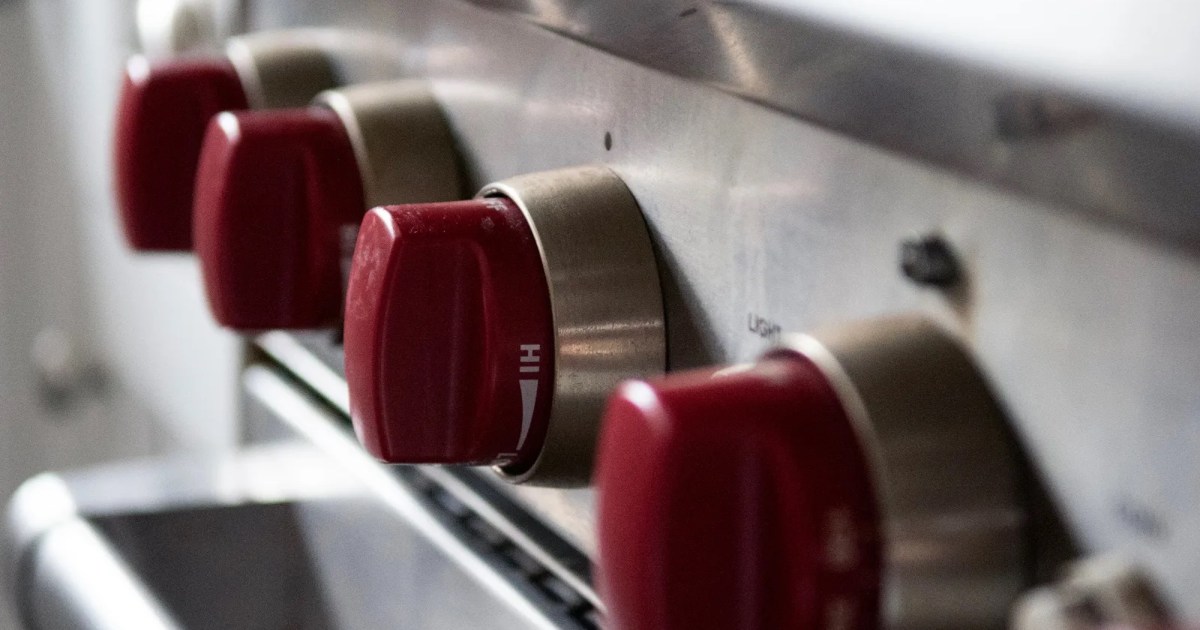Highlights: A study this summer found that using a single gas stove burner on high can raise levels of cancer-causing benzene above what’s been observed from secondhand smoke.
A new investigation by NPR and the Climate Investigations Center found that the gas industry tried to downplay the health risks of gas stoves for decades, turning to many of the same public-relations tactics the tobacco industry used to cover up the risks of smoking. Gas utilities even hired some of the same PR firms and scientists that Big Tobacco did.
Earlier this year, an investigation from DeSmog showed that the industry understood the hazards of gas appliances as far back as the 1970s and concealed what they knew from the public.
It’s a strategy that goes back as far back as 1972, according to the most recent investigation. That year, the gas industry got advice from Richard Darrow, who helped manufacture controversy around the health effects of smoking as the lead for tobacco accounts at the public relations firm Hill + Knowlton. At an American Gas Association conference, Darrow told utilities they needed to respond to claims that gas appliances were polluting homes and shape the narrative around the issue before critics got the chance. Scientists were starting to discover that exposure to nitrogen dioxide—a pollutant emitted by gas stoves—was linked to respiratory illnesses. So Darrow advised utilities to “mount the massive, consistent, long-range public relations programs necessary to cope with the problems.”
These studies didn’t just confuse the public, but also the federal government. When the Environmental Protection Agency assessed the health effects of nitrogen dioxide pollution in 1982, its review included five studies finding no evidence of problems—four of which were funded by the gas industry, the Climate Investigations Center recently uncovered.
Karen Harbert, the American Gas Association’s CEO, acknowledged that the gas industry has “collaborated” with researchers to “inform and educate regulators about the safety of gas cooking appliances.” Harbert claimed that the available science “does not provide sufficient or consistent evidence demonstrating chronic health hazards from natural gas ranges”—a line that should sound familiar by now.



Aight. I must be missing something huge here.
Here’s the formula for burning methane:
CH4 + 2O2 → CO2 + 2H2O
Are there other chemicals in the gas that don’t combust? Or don’t combust completely?
EDIT: Jesus Christ I’m an idiot, and y’all upvoted this?! The end product is water and carbon dioxide. Better than straight methane in the atmosphere, at least in the long term, but damn I’m stupid sometimes.
It seems that the main problem is the existence of benzene in the natural gas. It’s not an additive; it exists in crude oil and comes through in the final product after cracking and refining. I haven’t been able to find anything showing the exact method for which benzene acts as a carcinogen, but there are several studies that show a strong correlation between benzene exposure and leukemia.
Benzene is also in gasoline, so it’s also recommended that you don’t spend a lot of time huffing gasoline.
You’re not the boss of me.
Paint cans are still fine right?
Benzene is what’s called in intercolating agent. Essentially it can slip into your DNA strands between the base pairs, and hang out there so to speak. When your cells attempt to replicate DNA where benzene has sidled on in, it can cause errors in the replication. When cells build up enough DNA errors it can cause cancer.
Edit: this is an incorrect explanation, I was confusing benzene’s method of toxicity with ethidium bromide’s. Benzene metabolites are what’s toxic, usually due to oxidative damage.
Oh shit - thanks! I appreciate that. So how is it that benzene is able to get in there in the first place? Is it just because it’s non-polar? Or is it more that it activates certain pharmacophores on cells due to its shape, and is brought inside?
It seems I was actually wrong, sorry about that. I was thinking of agents like ethidium bromide, and assumed benzene was similarly toxic due to it’s planar structure. It seems it’s actually the metabolites of benzene that cause cancer, usually through oxidative damage:
https://www.ncbi.nlm.nih.gov/pmc/articles/PMC1469747/
Thanks for that! I really appreciate you.
Yes, natural gas contains a whole bunch of stuff that isn’t pure methane. It would be impractical and expensive to try and seperate out only the methane.
I assume there are contaminants or products of incomplete combustion.
LOL, you’re killing me Smalls. That’s exactly what I was asking.
Not sure about what happens with the chemical they add to make the gas smell.
There is some nitrogen in the air. In any combustion in the air, there is gonna be a small part of the nitrogen in the air reacting with the fuel, instead of oxygen. Why this happens when there are oxygen present? Idk. Entropy or something.
I’m a complete novice when it comes to chemistry though. So I might be completely wrong.
Nitrogen is notoriously unreactive though? Must be contaminants.
Most things become more reactive when heated. This includes nitrogen, here’s more info.